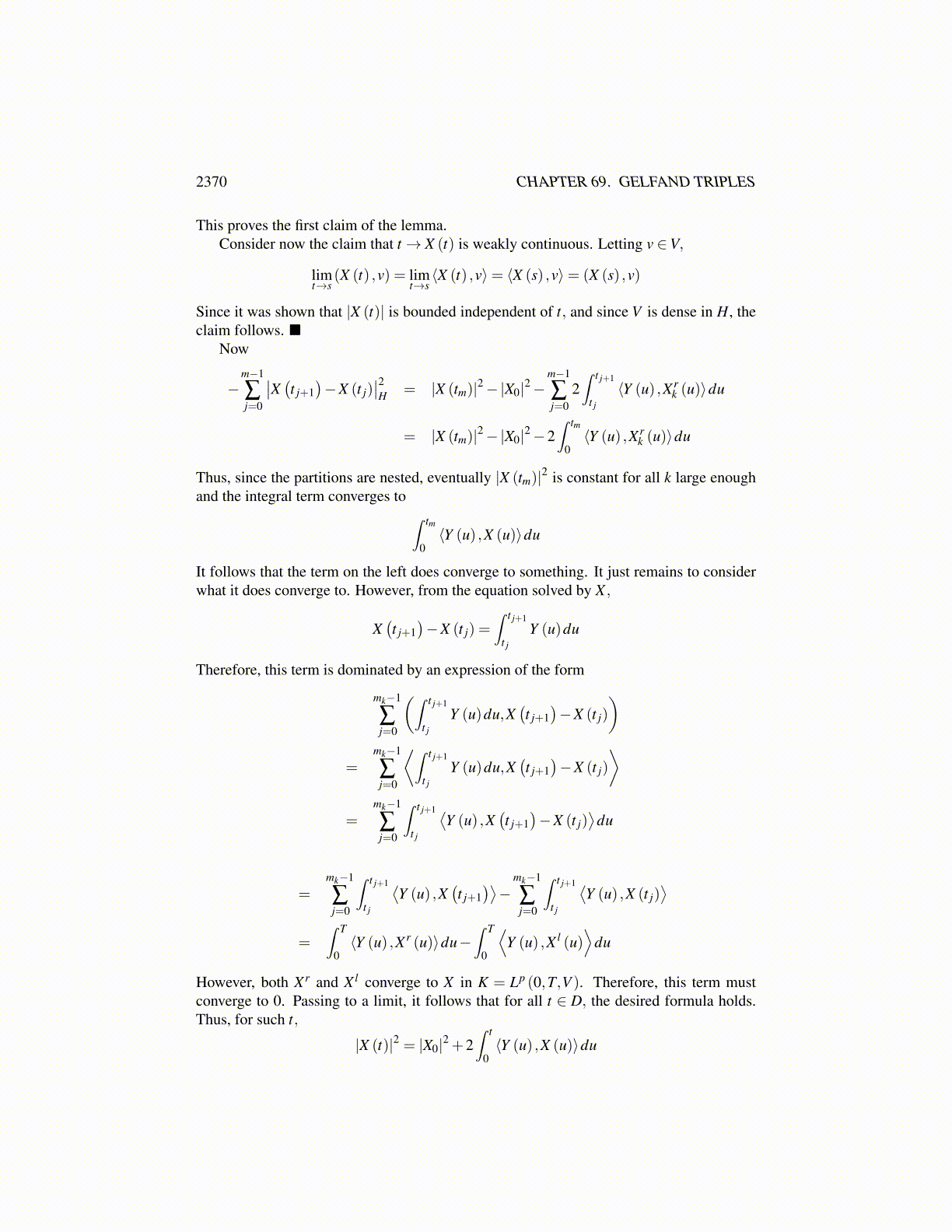
2370 CHAPTER 69. GELFAND TRIPLES
Lemma 69.3.3 Let s < t. Then for X ,Y satisfying 69.3.15
|X (t)|2 = |X (s)|2 +2∫ t
s⟨Y (u) ,X (t)⟩du−|X (t)−X (s)|2 (69.3.16)
Proof: It follows from the following computations
X (t)−X (s) =∫ t
sY (u)du
−|X (t)−X (s)|2 =−|X (t)|2 +2(X (t) ,X (s))−|X (s)|2
= −|X (t)|2 +2(
X (t) ,X (t)−∫ t
sY (u)du
)−|X (s)|2
= −|X (t)|2 +2 |X (t)|2−2⟨∫ t
sY (u)du,X (t)
⟩−|X (s)|2
Hence|X (t)|2 = |X (s)|2 +2
∫ t
s⟨Y (u) ,X (t)⟩du−|X (t)−X (s)|2
Lemma 69.3.4 In the above situation,
supt∈[0,T ]
|X (t)|H ≤C (∥Y∥K′ ,∥X∥K)
Also, t→ X (t) is weakly continuous with values in H.
Proof: From the above formula applied to the kth partition of [0,T ] described above,
|X (tm)|2−|X0|2 =m−1
∑j=0
∣∣X (t j+1)∣∣2− ∣∣X (t j)
∣∣2
=m−1
∑j=0
2∫ t j+1
t j
⟨Y (u) ,X
(t j+1
)⟩du−
∣∣X (t j+1)−X (t j)
∣∣2H
=m−1
∑j=0
2∫ t j+1
t j
⟨Y (u) ,X rk (u)⟩du−
∣∣X (t j+1)−X (t j)
∣∣2H
Thus, discarding the negative terms and denoting by Pk the kth of these partitions,
supt j∈Pk
∣∣X (t j)∣∣2H ≤ |X0|2 +2
∫ T
0|⟨Y (u) ,X r
k (u)⟩|du
≤ |X0|2 +2∫ T
0∥Y (u)∥V ′ ∥X
rk (u)∥V du